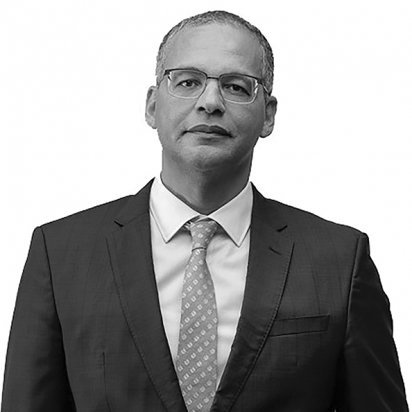
The importance of insurance in industrial business
Alexandre Carreira

Economic diversification
João Vaz
Persistent risks and uncertainties induce slow recovery of the economy
Salim Cripton Valá
Chairman of the Board of the Mozambique Stock Exchange

Since 2016 Mozambique has been pounded by a combination of adversities, risks and uncertainties, which have tested the resilience of the country, its institutions, its markets, its business sector and negatively affecting the lives of families. The consequences of the 2008 global economic crisis, the Undisclosed Debt Crisis, the natural disasters that have devastated the country, the political and military instability in the centre of the country and the terrorism in Cabo Delgado, the effects of the COVID-19 pandemic from 2020, in addition to shrinking global demand and the drop in the price of commodities that the country exports, have been causing shocks in supply and demand, detonating and delaying all efforts aimed at economic development. Economic factors have shaken the already fragile economic structure that has prevailed in the country in over 46 years of independence.
Despite the specific economic difficulties of an underdeveloped and still poor country, factors such as instability, natural disasters and COVID-19 have seriously shaken the foundations of the economy, further delaying initiatives to diversify the economy and its structural transformation through industrialisation. In 2020, the sectors of economic activity, with the exception of agriculture, electricity and health, recorded sharp falls, but in 2021, the overall trend was one of positive growth, albeit slow and faltering. The recent arrival of ENI’s floating platform in Mozambique with the consequent extraction and export of gas as from 2022 is, "per se”, a very positive sign for the future of the "Oil & Gas Era”, and an encouraging sign of hope for the country’s bright future, but expectations should not be inflated in the sense of seeing natural gas as the "Salvation of Mozambique”.
In an economically complex period such as 2020/2021, when many companies, in particular SMEs, have been left depressed and finding it difficult to carry out their projects, the Mozambique Stock Exchange (BVM), despite not being immune to the setbacks and constraints in the national economy, sought to adapt to the new circumstances, the vicissitudes and the new realities that emerged after the advent of COVID-19, while always seeking to be out of step in the face of adversity.
The evolution of the BVM’s main indicators reflects the continuous effort of the institution, the confidence of the economic agents in the capitals market, which have translated into the volume of financing achieved for the economy and the number of companies listed in the two years of the pandemic period (three listed companies). The BVM indicators for 2020/2021 express the growing commitment of entrepreneurs and investors in the capital market, as follows: i) market capitalisation, one of the most important market indicators, rose from 102,139 million MT at the end of 2019 to 119,860 million MT at the end of 2021, an increase of 17.3%; ii) the market capitalisation ratio rose from 15.1% in December 2019 to 18.0% of national GDP today, an increase of 19.2%; iii) financing to the economy increased by 75.4%, from 124,760 million MT to the current 218,820 million MT (3,395 million USD); iv) trading volume grew by 84.7%, from 5,100 million MT to 9,421 million MT; v) the liquidity index increased by 57.2%, from 5.0% to 7.9%. Other indicators such as the number of securities (161 in 2019 and 205 in 2021) and holders registered with the Central Securities Depository (from 22,150 in 2019 to 23,568 in 2021), increased by 27.3% and 6.4%, respectively. The only indicator that showed a negative evolution was the number of securities listed on the BVM (-3.5%), given that in 2019 there were 57 listed securities, and currently we have 55 securities, even though the number of listed shares rose by 20%.
After the economic downturn registered in 2020 (-1.3% in the growth rate), the year 2021 is registering GDP growth rates above 1.05%, and it is expected that in 2022 it will be at the level of 2.9%, which although this is a positive forecast in relation to the two previous years, it is certainly well below the country’s economic potential. The economic recovery so longed for in 2022 will not be a linear and automatic process and will have to rely on the contribution of multiple economic areas, including agriculture, mining, energy, financial services, manufacturing, construction, transport and tourism, the latter with the growing control of the effects of the COVID-19 pandemic and the reduction of instability hotspots.
In a macroeconomic context where there are still many risks and uncertainties, it is a positive sign that GDP grew by 3.4% in the third quarter of 2021. However, more inclusive and sustainable economic growth will require continuing and accelerating structural reforms in the economy, strengthening of developmental institutions, increasingly improving the business environment and the need to attract more investment and generate quality jobs. In fact, the economic year 2022 may be better than that of 2020 and 2021, but not much better, and therein exists the concrete opportunity for the BVM to substantially increase its contribution in the revival of the economy badly shaken by several crises in recent years.



